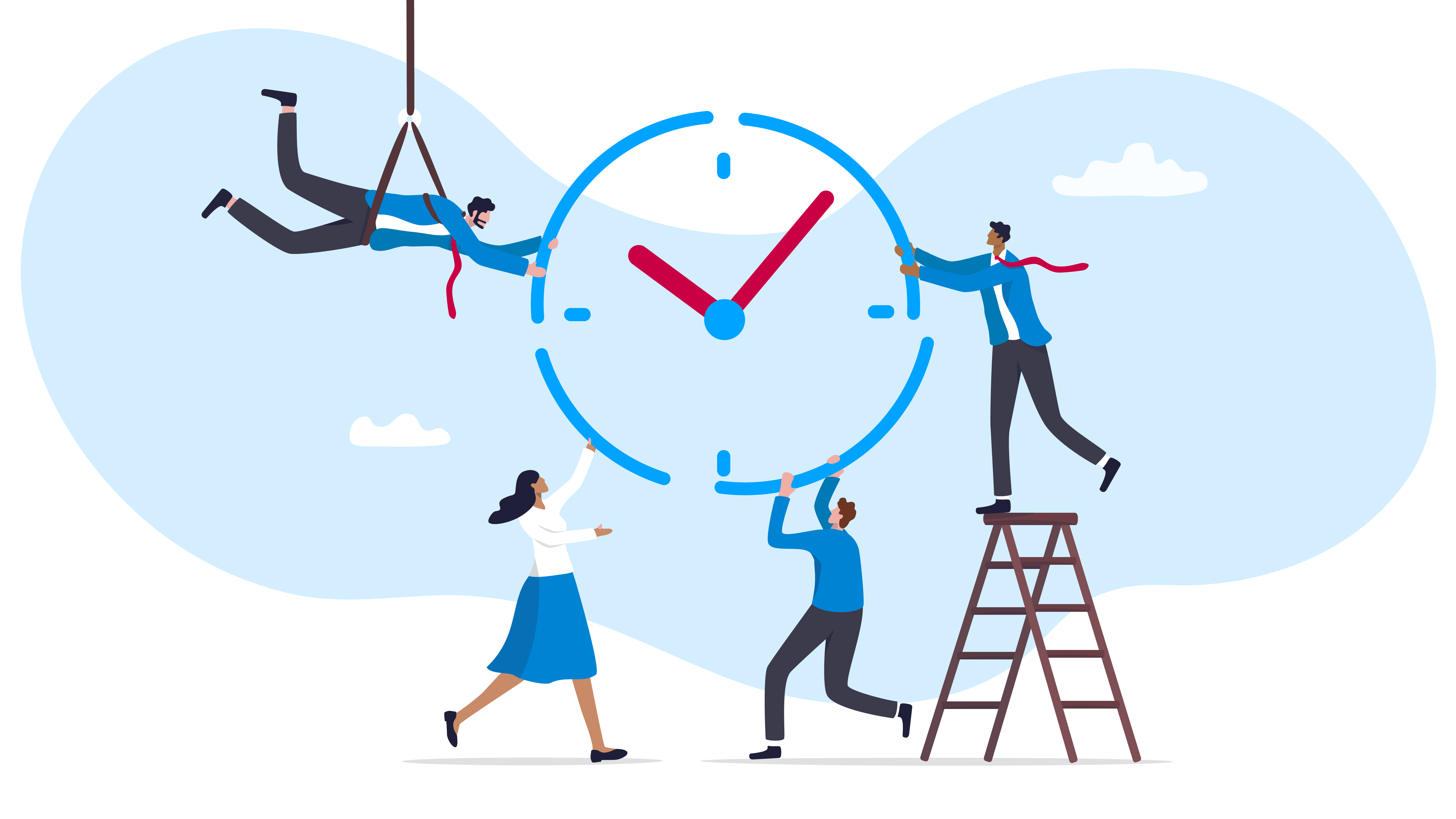
What is time management software and what features should you look for? in summary:
- Time management software should offer easy-to-use, configurable timesheets, accessible on any device, with approval workflows and automated notifications.
- Clock-in/clock-out functionality is essential, with versatile accessibility and exception management for real-time adjustments.
- Integrated features like automatic holiday calculations can streamline HR tasks, especially for casual workers.
If you’re still relying on paper-based spreadsheets to keep track of the hours your employees work, there’s a much better (and paper-free!) solution…
Time tracking and time management software, especially when bundled with a full HRIS, helps companies keep track of the hours employees work. It’s essentially like having a super-organised timekeeper who helps ensure everything is recorded properly.
And that info isn’t just for show, either… it’s essential for critical business operations, such as payroll, client billing or monitoring business productivity. So, it’s vital the information is recorded regularly, and most importantly, that it’s recorded accurately.
There are two common ways companies can record time worked: timesheets or clocking in/out. Back in the 20th century (feels weird even saying that!), this was mainly done through paper-based timesheets or even card-fed mechanical clock-in / clock-out machines. It was all very manual, very time consuming, and let’s be honest: not the most accurate method of record business-critical information. Luckily, things have moved on a fair bit…
Modern HR systems like Cezanne offer these time recording features as part of their overarching HR software suite – and the best part? It can all be done online via desktop or mobile apps, and without a pen and paper in sight. Better still, with all your workforce data linked and in one place, it makes it much easier to update and manage employee records. But there’s some other great benefits, too…
Working with timesheets
1. Easy timesheet creation and setup
Paper timesheets? Pah! They’re a thing of the past when it comes to time management.
Configurable digital timesheets, like those found in Cezanne’s time management software, can be easily set up with specific projects, clients, or activities. This means your employees can choose the ones relevant to them. This makes for easier and more accurate data entry; plus, rules can be set for whether overtime or travel counts towards billable time.
You can also format timesheets to fit around how you work. For example, you can set whether employees should put duration (hours) or start/end times for different activities.
2. Secure employee self-service
Employees should be able to complete their timesheets with ease. Having access to self-service timesheets on any device is convenient and makes it less likely they’d be forgotten. This is especially useful when employees are off-site or working remotely.
Clear layouts and on-screen alerts also decrease the likelihood of inputting the wrong information. And, if someone makes a mistake on their timesheet, configurable security roles allow for authorised changes to be made. As a result, both HR and line managers are more likely to have accurate people data at their fingertips.
3. Customisable approval workflows
Approving submitted timesheets should be just as easy, too. With good HR systems with time management features, you can set up different approval workflows that suit you and your organisation’s needs: whether that’s a single-step sign-off or multiple authorisations from different managers.
Once set up, timesheets should go through your workflows automatically and are sent to the right people at every step.
4. Straightforward reporting
With all your data in one place, your HR team has complete visibility over time worked, as well as the submission and review process. Automated notifications of overdue or incomplete timesheets allow the opportunity to nudge staff along the approval process when needed. And, simple exporting of reports enables you to drill down into the data to find how time can be spent more efficiently, or see which areas of the business would benefit from more support.
Bonus: Automatic calculations of holiday entitlement
Manually calculating holiday entitlement can be painful especially when your organisation regularly works with casual contract workers. If an HR system offers both absence management and time management features, you can use an employee’s timesheet data to automatically calculate their holiday entitlement, which means fewer headaches for HR.
Working with clock-in/clock-out
5. Versatile accessibility
For accurate data input and reporting, accessibility is a must for time management. For example, Cezanne’s Time module makes it easy for staff to clock in and out from different devices and setups: by mobile phone or tablet app. An on-site tablet app setup is particularly useful when you need to know which of your employees are in your office/workplace building at any given time.
6. Configurable exception rules
Lastly, when it comes to clocking in or out, a simple but overlooked mistake can cause a big problem down the line, so it’s important these are flagged up early.
Configurable exception rules for different time plans mean that the system can automatically notify you when employees have not met the expected working hours. For example, clocking in/out too late or forgetting to do it in the first place. HR and managers can then review these exceptions and decide whether to accept or reject them, ensuring that nothing is missed or ignored.
Paul Bauer
Paul Bauer is the Head of Content at Cezanne HR. Based in the Utopia of Milton Keynes (his words, not ours!) he’s worked within the employee benefits, engagement and HR sectors for over four years. He’s also earned multiple industry awards for his work – including a coveted Roses Creative Award.
